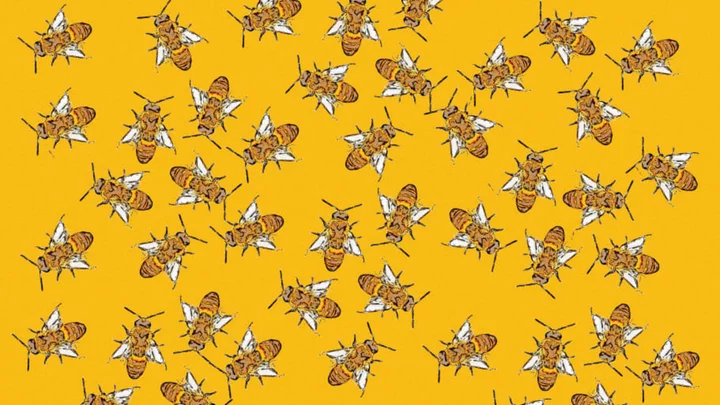This article contains affiliate links to products selected by our editors. Mental Floss may receive a commission for purchases made through these links.
In Dr. Seuss’s Horton Hears A Who!, Horton is the only one who can hear Whoville, a minuscule town on a speck of dust. Horton vows to protect the speck, declaring, “A person’s a person, no matter how small.” In this way, this popular children’s book promotes a lesson of equality—one that Dr. Seuss himself had to learn.
1. During World War II, Dr. Seuss drew racist anti-Japanese cartoons.
From 1941-1943, Theodor Seuss Geisel, a.k.a. Dr. Seuss, drew over 400 political cartoons for the newspaper PM. Among them were racist portrayals of Japanese people with slant-eyes, pig-noses, and coke-bottle glasses. When readers complained about these depictions, Dr. Seuss wrote back saying, “But right now, when the Japs are planting their hatchets in our skulls, it seems like a hell of a time for us to smile and warble: 'Brothers!' It is a rather flabby battlecry. If we want to win, we’ve got to kill Japs...We can get palsy-walsy afterward with those that are left.”
You can view Dr. Seuss’s political cartoons here.
2. ‘Horton Hears A Who!’ reflects his change of heart about the Japanese.
In 1953, Seuss visited Japan to research an article for Life magazine. He wanted to write about the effects of the war and post-war efforts on Japanese children. With the help of Mitsugi Nakamura, dean of Doshisha University in Kyoto, Seuss went to schools all over Japan and asked kids to draw what they wanted to be when they grew up. What Seuss saw made a deep impression, and when he returned to America, he started work on Horton Hears A Who! The book is dedicated Nakamura. He said in an interview, “Japan was just emerging, the people were voting for the first time, running their own lives—and the theme was obvious: ‘A person’s a person, no matter how small,’ though I don’t know how I ended up using elephants.”
3. The book references World War II.
For example, the black eagle dropping Whoville into a field of clover evokes a plane releasing a bomb when the mayor says, “the black bottomed birdie let go and we dropped / We landed so hard that our clocks have all stopped.” As the book continues, the Wickersham Brothers put Horton in a cage and threaten to dump Whoville into Beezle-Nut juice. Horton and the Mayor urge the town to action in language similar to World War II propaganda:
“This,” cried the Mayor, “is your town’s darkest hour!The time for all Whos who have blood that is red
To come to the aid of their country!” he said.
We’ve GOT to make noises in greater amounts!
So, open your mouth, lad! For every voice counts!”
4. ‘Horton Hears A Who!’ is a sequel, of sorts.
Horton first appeared in Seuss's 1940 book Horton Hatches the Egg. In it, a bird named Mayzie talks Horton into sitting on her egg while she flies off for a vacation in Palm Beach. For 51 weeks, Horton sits on the egg, repeating, "I meant what I said, and I said what I meant. An elephant's faithful, one hundred percent!" In the end, the egg hatches to reveal an elephant bird, who ditches its deadbeat mom and goes to live with Horton in the jungle. Here’s the ending of the 1942 Merrie Melodies cartoon of the story:
5. Dr. Seuss came up with Horton by accident.
As the story goes, one day Seuss took a break from working and went for a walk, leaving the window of his studio open. When he came back, he saw that the wind had moved two pieces of transparent paper on top of each other. One paper was a drawing of an elephant and the other was a drawing of a tree. The wind had moved them so that it looked like the elephant was sitting in the tree. Seuss’s imagination was sparked. What was an elephant doing in a tree? Soon after, Horton was born.
6. Horton was named after a college friend.
Seuss considered the names Osmer, Bosco, and Humphrey before settling on Horton for the elephant, after Horton Conrad, a friend from Dartmouth College. Both men had worked on the college humor magazine, The Dartmouth Jack-o-Lantern.
7. ‘Horton Hears A Who!’ was written in anapestic tetrameter.
In fact, most of Dr. Seuss’s books are in this meter. Each line repeats a pattern of unstressed/unstressed/stressed syllables four times, for a total of 12 syllables. Another example of a poem that uses anapestic tetrameter is "A Visit from St. Nicholas."
8. The working title for the book was ‘Horton Hears ‘Em'’.
At first Seuss called the book ‘Horton Hears ‘Em’ before changing it. The new title suggests the importance of the Whos in the story. Whoville appeared again three years later in How the Grinch Stole Christmas! and then a third time in the 1977 TV special Halloween is Grinch Night.
9. Dr. Seuss worked through Christmas to finish the book.
Since he was behind schedule, Seuss had to cancel plans to go to Yosemite over the holidays and worked straight through Christmas. In January, the book was done. According to his biographers, Dr. Seuss sat down in the offices of Random House in New York and read Horton Hears A Who! aloud to his editors. It was met with enthusiastic applause.
10. There was also a ‘Horton Hears A Who!’ TV special.
The 1966 cartoon of How The Grinch Stole Christmas was so popular that director Chuck Jones followed up with Horton Hears A Who! It aired in 1970 on CBS.
This article was originally published on www.mentalfloss.com as 10 Facts About Horton Hears A Who!.





![What’s the Difference Between ( ), [ ], { } and < >?](/i/c/59c9f13e-6fd7-341f-77d2-d63fe03638cd.webp)



